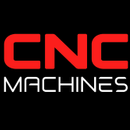Addressing the Shortage of Machinists Operating CNC Machines: Strategies for a Sustainable Future

Addressing the Shortage of Machinists Operating CNC Machines: Strategies for a Sustainable Future
The manufacturing industry is facing a critical shortage of skilled machinists to operate CNC (Computer Numerical Control) machines. As demand for precision machining increases, companies are struggling to fill positions that are vital for maintaining productivity and competitiveness. This article explores the causes of the machinist shortage and presents effective strategies to bridge the skills gap, including full automation, semi-automation, inline CNC programming, and integrating AI into the hiring and training process.
Understanding the Shortage of Machinists
The shortage of machinists operating CNC machines stems from various factors:
- Aging Workforce: Many skilled machinists are nearing retirement, and there aren't enough younger workers entering the field to replace them.
- Skills Gap: Rapid technological advancements have created a skills gap, with many potential candidates lacking the necessary training and experience in CNC operations.
- Industry Growth: The demand for CNC machining services is rising, driven by industries such as aerospace, automotive, and medical devices, further exacerbating the shortage.
Strategies to Fill the Gap
1. Full Automation
Full automation involves the use of robotics and advanced CNC systems that can operate independently without human intervention. By implementing fully automated solutions, manufacturers can:
- Increase Production Efficiency: Automated systems can operate 24/7, significantly increasing output and reducing production time.
- Reduce Dependency on Skilled Labor: With machines handling most of the tasks, the reliance on skilled machinists is diminished, allowing companies to focus on maintaining and programming the equipment rather than operating it.
2. Semi-Automation
Semi-automation combines manual and automated processes, allowing machinists to work alongside machines while retaining control over critical tasks. This strategy offers several advantages:
- Enhanced Flexibility: Machinists can quickly adapt to changing production needs while benefiting from automated assistance in repetitive tasks.
- Skill Development: Working with semi-automated systems allows machinists to learn and develop new skills, helping to fill the skills gap in the workforce.
3. Inline CNC Programming
Inline CNC programming refers to the ability to program CNC machines directly on the shop floor, rather than in a separate office setting. This approach can enhance efficiency in several ways:
- Real-Time Adjustments: Operators can make immediate changes to programs based on observed machine performance or production requirements.
- Training Opportunities: Inline programming allows for on-the-job training, enabling less experienced machinists to learn directly from seasoned operators, thus accelerating the skills development process.
4. Integrating AI into Hiring and Training
Artificial Intelligence (AI) can play a pivotal role in addressing the machinist shortage through:
- Enhanced Recruitment Processes: AI-driven tools can help identify potential candidates by analyzing resumes, assessing skills, and matching candidates to job requirements more efficiently.
- Personalized Training Programs: AI can tailor training programs to meet the individual needs of machinists, helping them to acquire the necessary skills at their own pace and increasing retention rates.
- Predictive Analytics: AI can forecast future skill requirements based on industry trends, allowing companies to proactively address potential workforce shortages.
Conclusion
The shortage of machinists operating CNC machines presents a significant challenge for the manufacturing industry. However, by embracing strategies such as full automation, semi-automation, inline CNC programming, and the integration of AI into hiring and training processes, manufacturers can effectively fill the skills gap and ensure a sustainable future. Investing in these strategies not only helps to address the current workforce shortage but also prepares companies for the evolving demands of the manufacturing landscape.
By proactively addressing these challenges, the industry can continue to thrive, ensuring that skilled machinists are available to meet the growing demand for CNC machining services.


